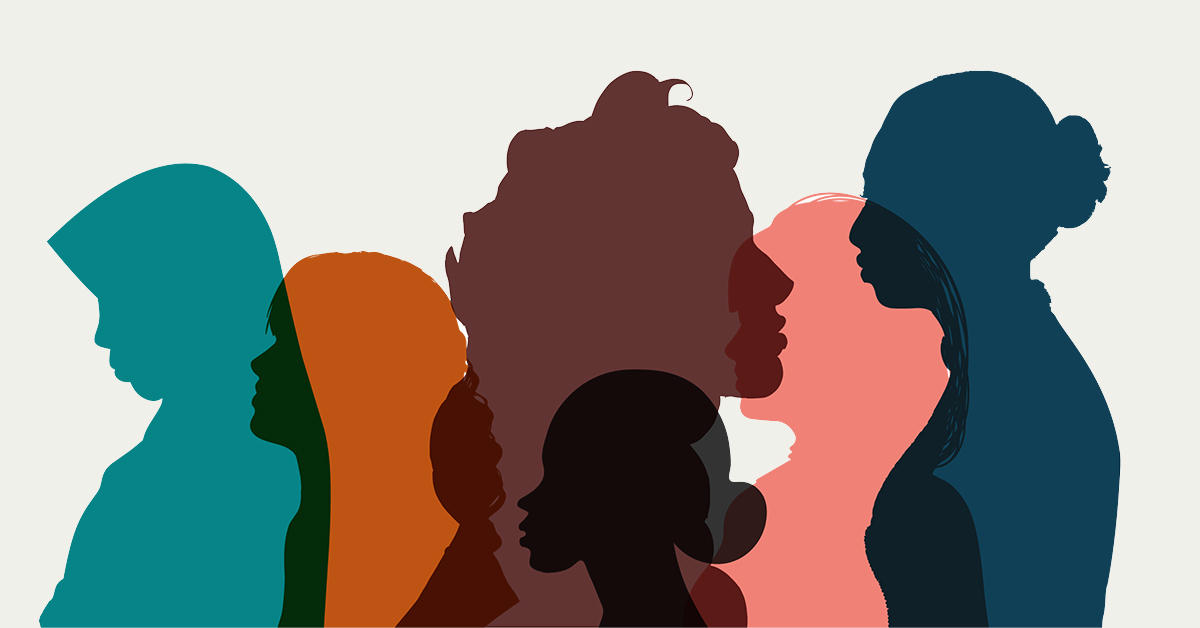Is that call still relevant in 2023? And how are women faring in the 21st century? To find out, we spoke with Manon Tremblay, a professor with the University of Ottawa Faculty of Social Sciences and an expert on women and LGBTQ+ persons in politics.
Professor Tremblay provides a snapshot of the status of women in the upper echelons of power. The takeaway? Not only is the call still relevant, but it needs to resound even more.
Canada lagging far behind in the number of women in power
According to Tremblay, the results are mixed when we weigh women’s progress in terms of their roles and status. “Women are still mainly responsible for the production of life, and they are still the targets of abuse, be it psychological, physical or financial,” she says, adding that our societies continue to run along patriarchal lines.
Each month, the Inter-Parliamentary Union publishes rankings based on the percentage of women in national parliaments. The latest ranking puts Canada in 61st spot. That does not surprise Tremblay, however. “Canada has had just one female prime minister, Kim Campbell.” Campbell, who took over as leader of the Progressive Conservative party (one of the founding parties of today’s Conservative Party) following then-prime minister Brian Mulroney’s resignation, served for just a few months. The position of deputy prime minister, which is currently held by Minister of Finance Chrystia Freeland, comes with no decision-making authority. Freeland’s mandate letter, which sets out her role as deputy prime minister, states that she is to work in close collaboration with the prime minister in setting and implementing the government’s agenda. Obviously, Freeland’s portfolio as finance minister comes with significant powers. Despite the progressive will of our leaders in Canada (and the United States), women continue to be relegated to the background.
According to Tremblay, the public discourse distorts the actual situation by depicting Canada as a progressive, avant-garde country, which it is not. It hides the questions that we need to ask in order to have a nuanced understanding of the reality in Canada. If we were to compare ourselves, for example, to Germany, France or the United Kingdom, what conclusions would we come to?
Other statistics speak volumes as regards that reality. Just 4.6% of Canadian companies listed on the Toronto Stock Exchange were headed by a woman in 2020. When it comes to the pay gap, Statistics Canada reported that “[i]n 2021, female employees aged 25 to 54 earned $3.79 (11.1%) less per hour, on average, than their male counterparts. In other words, women in this age group earned $0.89 for every dollar earned by men.” The Statistics Canada data also shows that when it comes to menial—but critical— chores, men pitch in significantly less than women.
Current and future status of women in the private sphere and in parity terms
The situation is hardly better when it comes to physical and financial security. According to the latest statistics, a woman or girl is killed every two days in Canada.
If we add to that the heightened fragility of the education and health-care systems in Canada’s provinces and territories (which affects women more than men), it is difficult to come to positive conclusions or even to anticipate improvements.
On the issue of parity in politics in Canada, Tremblay maintains that what debate there is tends to be low key. “For sure, to appeal to certain audiences, this issue will occasionally be resurrected during election campaigns, as the media duly noted during the last election campaign in Quebec. But, by and large, parity is seen by the Canadian public and political class as an ‘interesting question’ at best, and at worst as a matter solely of interest to academics... To avoid the issue, people say there are far more important things in life, such as economic concerns.”
Tremblay’s research paints a bleak picture of the status of women currently. The stagnating and even diminished presence of women in the public and private sectors that she has observed dictates that we waste no time in taking another look at the situation, for example, as regards the pandemic exit plans being crafted.
“In my view, the future looks bleak.... The pandemic eroded many of the systems that have been in place since the 1970s—systems that enabled women to extricate themselves a little from the quagmire of gender based-discrimination that characterizes their existence. There is a whole slew of studies that show that women have lost ground because of the pandemic,” Tremblay concludes.
Sources cited by Manon Tremblay
OFFICE OF THE PRIME MINISTER. “Mandate letter of the Deputy Prime Minister and the Minister of Finance”, December 16, 2021. Accessed March 8, 2023: https://pm.gc.ca/en/mandate-letters/2021/12/16/deputy-prime-minister-and-minister-finance-mandate-letter
CARIGNAN, Anne-Charlotte. “Une femme ou une fille est tuée tous les deux jours au Canada”, Ici Radio-Canada Winnipeg, June 8, 2022. Accessed March 8, 2023: https://ici.radio-canada.ca/nouvelle/1886579/feminicide-meurtre-violence-genre-rapport-manitoba
Canadian Securities Administrators. “Review of Disclosure Regarding Women on Boards and in Executive Officer Positions”, October 27, 2022. Accessed March 8, 2023: https://www.securities-administrators.ca/wp-content/uploads/2022/10/sn_20221027_58-314_women-on-boards.pdf
Website of the Canadian Femicide Observatory for Justice and Accountability. Accessed March 8, 2023: https://www.femicideincanada.ca/about
STATISTICS CANADA. “Quality of Employment in Canada: Pay gap, 1998 to 2021”, May 30, 2022. Accessed March 8, 2023: https://www150.statcan.gc.ca/n1/pub/14-28-0001/2020001/article/00003-eng.htm
INTER-PARLIAMENTARY UNION. “Monthly ranking of women in national parliaments”, Accessed March 8, 2023: https://data.ipu.org/women-ranking?month=1&year=2019
HUMAN DEVELOPMENT REPORT. “Gender Development Index”. Accessed March 8, 2023: https://hdr.undp.org/gender-development-index#/indicies/GDI%20site%20du%20Human
MILAN, Anne, KEOWN Leslie-Anne et ROBLES URQUIJO, Covadonga. “Les familles, la situation dans le ménage et le travail non rémunéré”, Statistics Canada, December 2011. Accessed March 8, 2023: https://www150.statcan.gc.ca/n1/pub/89-503-x/2010001/article/11546-eng.htm
GIRARD, Joëlle. “Plus de candidates, plus de députées?”, Radio-Canada, September 15, 2018. Accessed March 8, 2023: https://ici.radio-canada.ca/nouvelle/1123977/parite-femmes-assemblee-nationale-quotas-quebec-candidates-caq-francois-legault-laporte
DESAUTELS, Katrine. “Québec solidaire présente 70 femmes parmi ses 125”, La Presse, August 27, 2022. Accessed March 8, 2023: https://www.lapresse.ca/elections-quebecoises/2022-08-27/quebec-solidaire-presente-70-femmes-parmi-ses-125-candidats.php
RICHER, Jocelyne. “Nombre record de femmes élues à l’Assemblée nationale”, Le Soleil, October 4, 2022. Accessed March 8, 2023: https://www.lesoleil.com/2022/10/04/nombre-record-de-femmes-elues-a-lassemblee-nationale-83e959b9674fcaac8f62c81e704f9792
